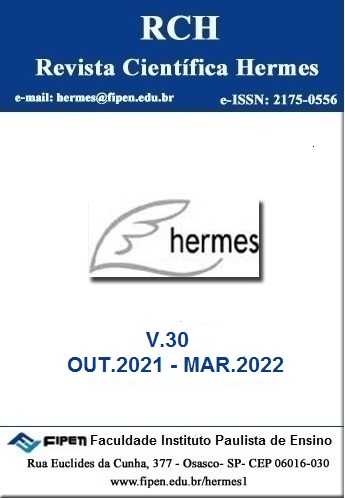Tax on non-alcoholic beverages and their consumption in Ecuador
DOI:
https://doi.org/10.21710/rch.v30i0.603Keywords:
increase, tax on special consumption, sugary drinksAbstract
The purpose of this article was to analyze whether the increase in the Special Consumption Tax (ICE) on sugary drinks in April 2016 decreased the intake of these products by the inhabitants of Ecuador. To do this, surveys were applied to 1878 people belonging to the regions of the Coast, Sierra and Amazon. The study results highlighted that despite the increase in this tax, people in urban areas consume this type of beverages at least once a month, and it can also be seen that the largest consumers are adolescents. Although the state implemented this measure, its objective has not been met since the health status of citizens has not improved in recent years.
References
Alberto Díaz, A., Veliz, P. M., Rivas Mariño, G., Vance Mafla, C., Martinez Altamirano, L. M., & Vaca Jones, C. (2017). Etiquetado de alimentos en Ecuador: implementación, resultados y acciones pendientes. Rev Panam Salud Publica, 41-52. Obtenido dehttps://iris.paho.org/bitstream/handle/10665.2/34059/v41a542017.pdf?sequence=1&isAllowed=y&ua=1
Asamblea Nacional del Ecuador. (2016). Registro Oficial N° 111.Obtenido de https://zonacontable.net/uploads/documento/SRO111.pdf
Asamblea Nacional del Ecuador. (2019). Código de Trabajo.Quito.
Boston Public Health Commission. (2010). Hoja informativa sobre las bebidas azucaradas, la obesidad y las enfermedades crónicas.Obtenido de https://www.bphc.org/whatwedo/healthy-eating-active-living/sugar-smarts/beverage-environment/Documents/SSB%20Fact%20Sheet%20Update%20June%2030%202014_sp.pdf
Bustos, J. (19 de 11 de 2018). Azúcar e impuestos bipolares. El telégrafo.
Corral Guerrero, L. (1995). El impuesto: un enfoque integrador. Cuadernos de Estudios Empresariales(5), 69-96. Obtenido de https://dialnet.unirioja.es/servlet/articulo?codigo=164234
El Comercio. (11 de 07 de 2019). Estudio vincula las bebidas azucaradas con el riesgo de sufrir cáncer. El Comercio. Obtenido de https://www.elcomercio.com/tendencias/estudio-bebidas-azucaradas-riesgo-cancer.htm
García Flores, C. L., López Espinoza, A., Martínez Moreno, A. G., Beltrán Miranda, C. P., & Zepeda Salvador, A. P. (28 de Junio de 2017). Estrategias para la disminutición del consumo de bebidas endulzadas. Rev Esp Nutr Hum Diet, 22. doi: 10.14306/renhyd.22.2.426 [ahead of print]
Ludeña Rueda, Y. M., Martínez Ordóñez, R. G., & Feijoo Cisneros, M. E. (Febrero de 2019). LaTributación y su interacción disciplinal. Universidad y Sociedad, XI(2), 286-298. Obtenido de http://scielo.sld.cu/pdf/rus/v11n2/2218-3620-rus-11-02-286.pdf
Martínez, C. (2012). Estadística y muestreo(Vol. 13). Bogotá.
Mendivelso, F., & Rodríguez, M. (2018). Prueba de chi-cuadrado de independencia aplicada a tablas 2xN. 21. Obtenido de https://www.unisanitas.edu.co/Revista/67/05Rev_Medica_Sanitas_21-2_FMendivelso_et_al.pdf
Organización Panamerica de la Salud. (2019). Alimentos y bebidas ultraprocesados enAmérica Latina: ventas, fuentes, perfiles de nutrientes e implicaciones.Washington, DC: OPS. Obtenido de https://iris.paho.org/handle/10665.2/51523#:~:text=Se%20incluyen%20entre%20ellos%20las,y%20los%20platos%20previamente%20preparados.
Rodríguez, R. J. (1996). Teoría básica del muestreo.Buenos Aires. Obtenido de http://www.rubenjoserodriguez.com.ar/wp-content/uploads/2011/07/Teoria_Basica_del_Muestreo.pdf
Servicio de Rentas Internas . (2 de Febrero de 2021). Obtenido de https://www.sri.gob.ec/web/guest/impuesto-consumos-especiales#:~:text=El%20Impuesto%20a%20los%20Consumos,Ley%20de%20R%C3%A9gimen%20Tributario%20Interno.
Downloads
Published
How to Cite
Issue
Section
License
Copyright (c) 2021 Revista CientÃfica Hermes - FIPEN

This work is licensed under a Creative Commons Attribution 4.0 International License.






